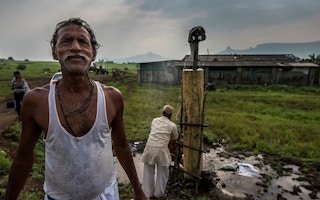Warming due to climate change may have caused some 59,000 suicides over the last three decades in India, says a new study which statistically links temperature spikes to crop failures and farmer distress and suicides.
Published July in Proceedings of the National Academy of Sciences, the analytical study focused on India — where one-fifth of the world’s suicides occur — to demonstrate that climate factors, particularly temperature rise, influence a growing suicide epidemic.
“These are deaths which would not have occurred had the warming we’ve observed in the historical record not taken place,” says Tamma Carleton, researcher at the University of California and lead author of the study.
“It appears that crop losses are the key culprit linking temperature during the growing season to annual suicides as reductions in agricultural income can lead to poverty and distress, causing some individuals to cope by committing suicide,” says Carleton.
Temperature rise could partly explain why suicide rates have been on the rise in India since 1980, claiming an average of 130,000 lives annually. Some 70 per cent of India’s 1.3 billion people are directly or indirectly dependent on agriculture for their livelihood.
“
It appears that crop losses are the key culprit linking temperature during the growing season to annual suicides.
Tamma Carleton, University of California
Carleton tested the links between climate change, crop yields and suicides by pairing the numbers for India’s reported suicides in each of its 32 states between 1967 and 2013, using a dataset prepared by the Indian National Crime Records Bureau, along with statistics on India’s crop yields and high-resolution climate data.
To isolate the types of climate shocks that damage crops, Carleton focused on temperature and rainfall during India’s summer monsoons in June—September, a critical period for crop productivity.
Carleton found that for temperatures above 20 degree Celsius, increase by just a degree in a single day causes roughly 70 suicides, on average. Warming by five degrees Celsius has five times that effect.
“This effect occurs only during India’s agricultural growing season, when heat also lowers crop yields. I find no evidence that acclimatisation, rising incomes, or other unobserved drivers of adaptation are occurring,” she says.
“This analysis does not have the data required to make specific policy recommendations regarding suicide prevention,” Carleton admits. “However, the finding that crop losses appear to be the key culprit linking the climate to suicide suggests that policies like crop insurance could be successful in reducing suicides.”
Environmental economist Joyashree Roy, professor of economics at Jadavpur University and member of the IPCC—2007 Nobel Peace Prize winning panel, says that she has several reservations with the analysis particularly in making “spurious correlation”.
“Any two numerical dataset can always show very close togetherness, but causality is something which needs deeper analysis by establishing a relation between the variables,” Roy says.
“While the study has done due diligence with data analysis, it lacks any kind of socio-economic deeper analysis to explain a complex behavioural decision like committing suicide.”
This piece was produced by SciDev.Net’s Asia & Pacific desk.








